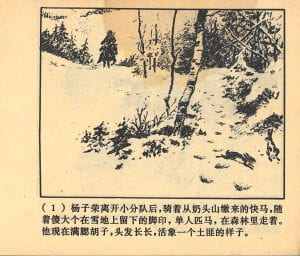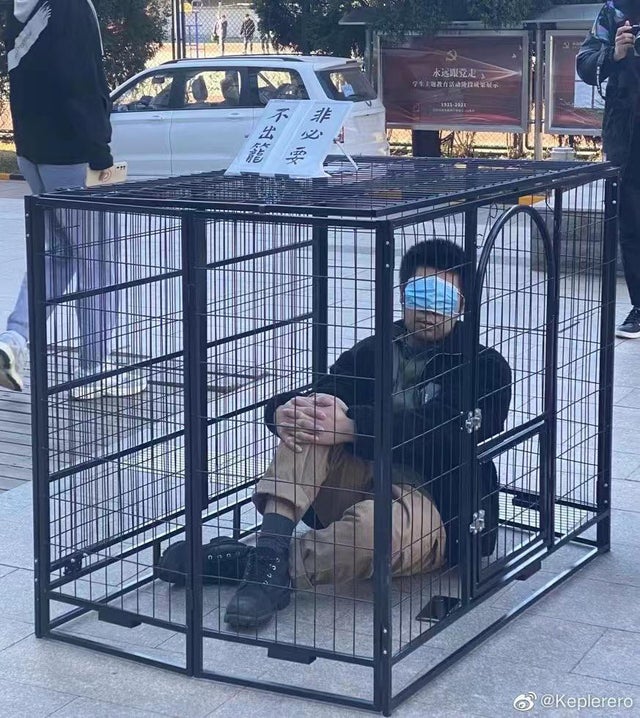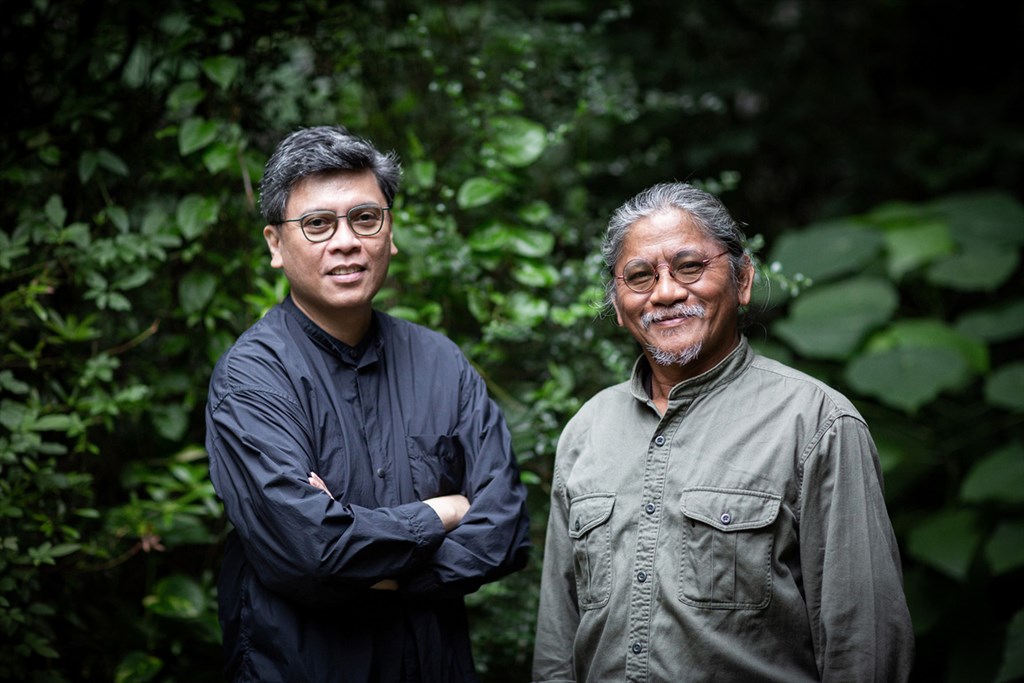MCLC Resource Center is pleased to announce publication of Julia Keblinska’s translation of “Into the Tiger’s Den,” volume 3 of a lianhuanhua (serial comic) adapted from Qu Bo’s novel Tracks in the Snowy Forest. Find a teaser below. For the full translation, with images of each panel, see: https://u.osu.edu/mclc/online-series/into-the-tigers-den/. My gratitude to Julia Keblinska for sharing her work with the MCLC community.
Adapted from the novel by Qu Bo 曲波 Tracks in the Snowy Forest 林海雪原
Wang Xingbei 王星北 (adaptation); Luo Xing 罗兴 and Wang Yiqiu 王亦秋 (illustrations)[1]
Translated by Julia Keblinska
MCLC Resource Center Publication (Copyright March 2022)

Content Summary:
The second volume, “Troops Divide onto Three Roads,” tells the story of a small detachment of soldiers who capture the bandit Luan Ping and search out the “Vanguard Map” of Nipple Mountain’s Horse Cudgel Xu. They then divide into three groups and set out to trace the enemy’s tracks.
This volume follows Yang Zirong as he disguises himself as a bandit and, with only a horse for company, enters the bandit nest on Tiger Mountain to become a deputy colonel under Mountain Vulture. Meanwhile, we also learn how the small detachment mobilizes the masses at Jiapi Valley Village. They organize a civilian-army team, practice skiing, and enthusiastically prepare to annihilate the cruel bandits.
The next volume, “Taking Tiger Mountain by Strategy,” recounts how Yang Zirong rejoins the small detachment and destroys Mountain Vulture’s bandit gang together with them.

(1) After Yang Zirong left the small detachment, he rode the speedy steed captured at Nipple Mountain. Following in the footsteps Big Chump had left in the snow, he traveled alone through the forest with only his horse for company. He now sported a full-faced beard and long hair; he looked just like a real bandit. [click here to read the entire text]
 Last week, I (belatedly) learned that Taiwan printmaker, illustrator, and bird expert He Huaren (何華仁) passed away in the week prior to Christmas 2021. MCLC Listserve members interested in (woodcut) printmaking and illustration will likely know of his work, and may have purchased books written by He or others, featuring his superb illustrations. He Huaren was also one of Taiwan’s most renowned birders and an activist for the preservation and protection of Taiwan’s bird and wildlife habitat; he was especially fond of raptors. Huaren was extremely generous, ever humble, had an outstanding sense of humor, and loved single malt scotch. Here are some sources on or by He Huaren.
Last week, I (belatedly) learned that Taiwan printmaker, illustrator, and bird expert He Huaren (何華仁) passed away in the week prior to Christmas 2021. MCLC Listserve members interested in (woodcut) printmaking and illustration will likely know of his work, and may have purchased books written by He or others, featuring his superb illustrations. He Huaren was also one of Taiwan’s most renowned birders and an activist for the preservation and protection of Taiwan’s bird and wildlife habitat; he was especially fond of raptors. Huaren was extremely generous, ever humble, had an outstanding sense of humor, and loved single malt scotch. Here are some sources on or by He Huaren.


 “Humanity is far from understanding itself. The turning point of civilization’s recklessly unrestrained exploration of the abyss of consciousness has been slow to arrive. Actually, we already know that Hell is our ideal way home (31).”
“Humanity is far from understanding itself. The turning point of civilization’s recklessly unrestrained exploration of the abyss of consciousness has been slow to arrive. Actually, we already know that Hell is our ideal way home (31).”






